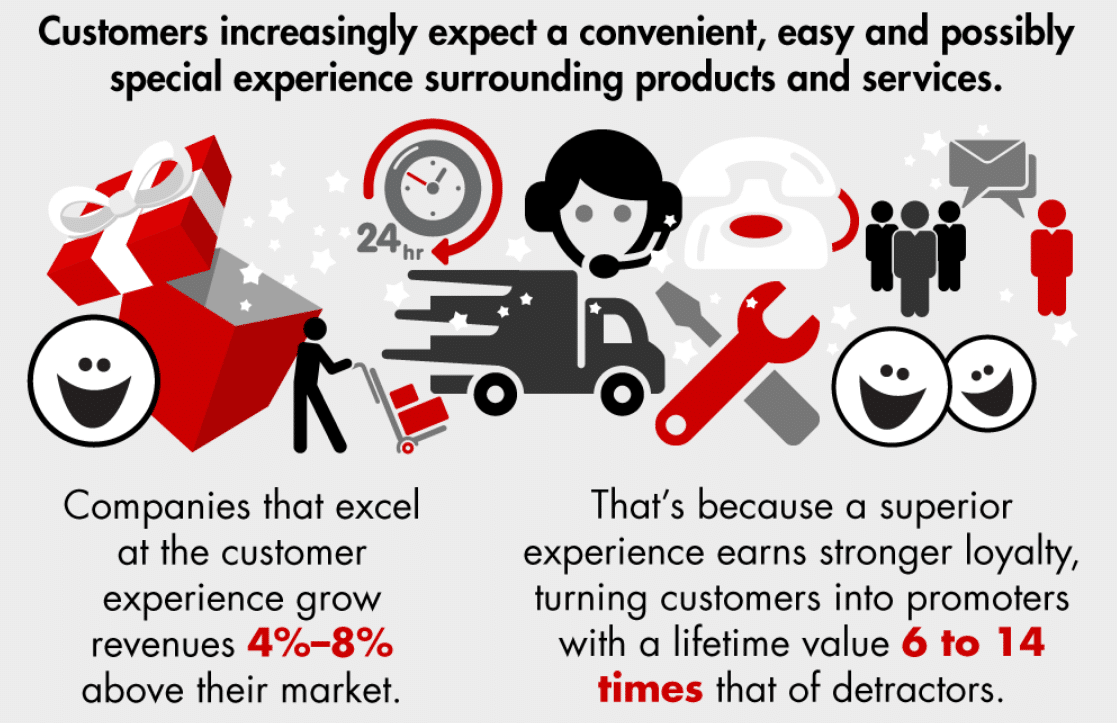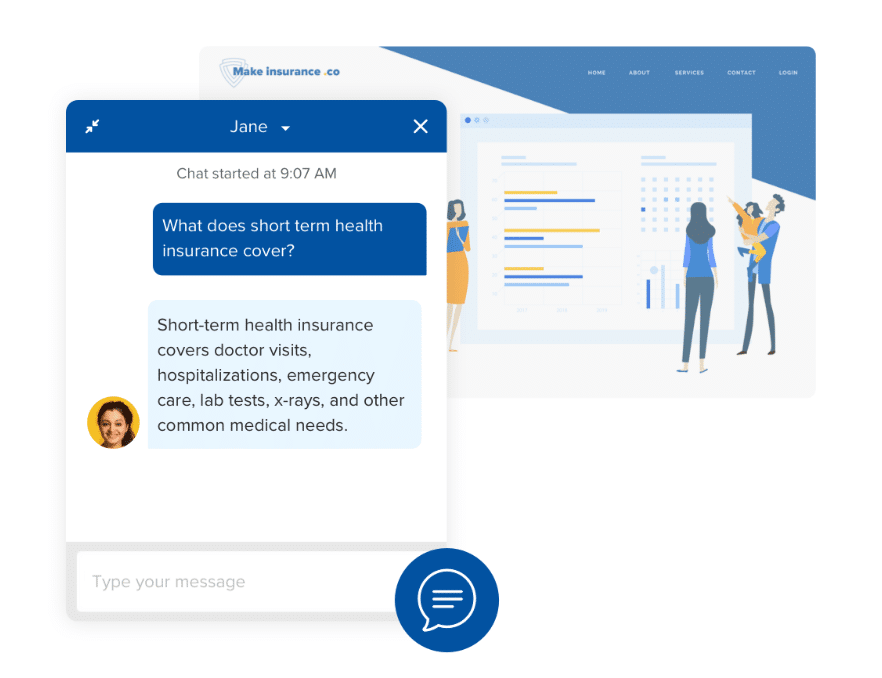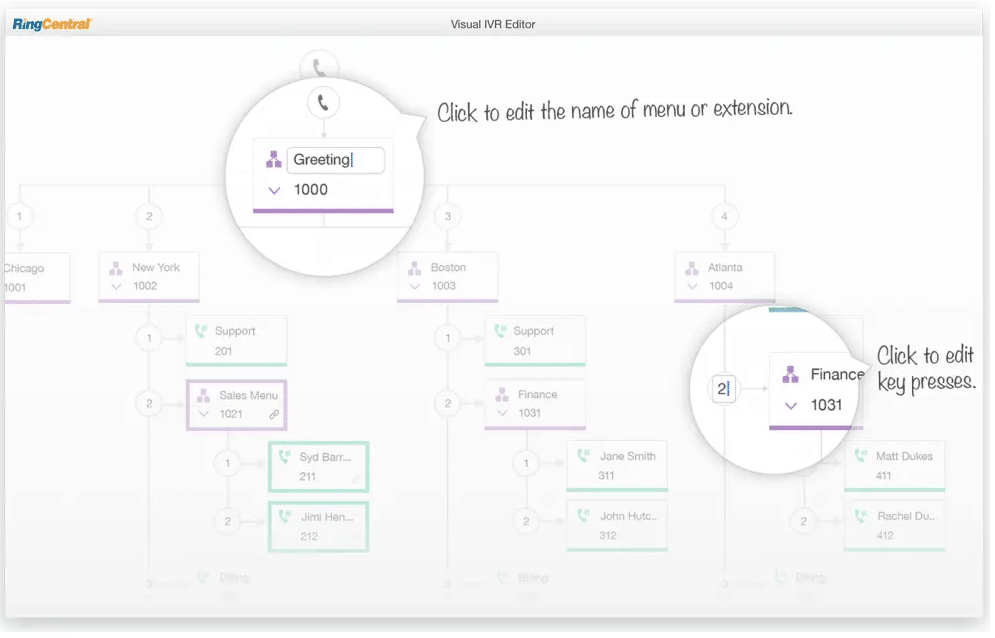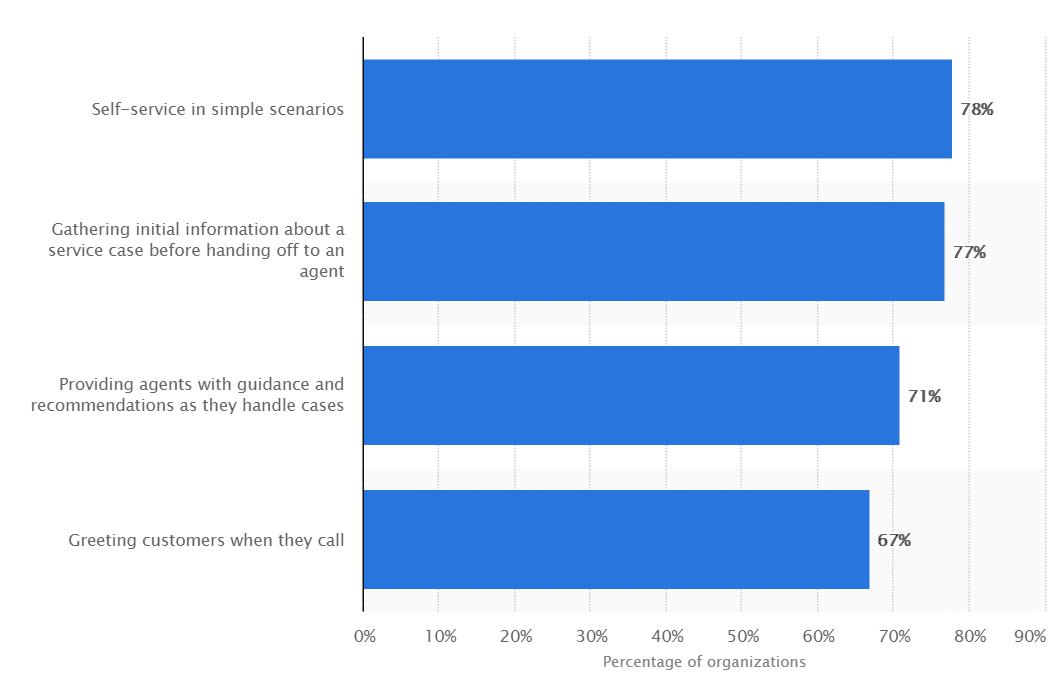Nearly 95% of consumers cite customer service as important in their choice of and loyalty to a brand. A lack of good customer support can cause you to lose out on users, impacting your revenue. In fact, businesses can grow their revenue by as much as 8% above their competition when they improve the customer service experience.

Source: Bain & Company
Just setting up customer support isn’t enough. You also need a customer support team that is responsive and is proactively helping your users to use your product or services.
We’ve listed ten ways you can improve your customer support and make it more responsive.
10 Ways to Make Your Customer Support More Responsive
1. Provide a live chat option to be more accessible
To start with, you need to make sure that your users can access your team to ask questions, get help, and raise issues. Provide live chat on your product or within your website so that users can connect with your customer support at any time.
When setting up a live chat, you can customise the chat widget to reflect your brand colour and even add a friendly message within the widget to provide a positive experience for your users.

Source: RingCentral
Unlike phone support, where your customer may have to verbally describe the issue they are facing on your website, you can integrate your live chat with co-browsing that lets your agent see what the customer sees; and fix these issues immediately.
2. Assign agents around the clock to actively help your users
Depending on what you sell, the size of your business, and the geographies you cater to, you may need to have agents supporting customers round the clock.
Having the right number of agents on call can be critical. Too few and you may end up with frustrated and angry customers. Too many, and you have a bloated workforce that eats into your margins.
There are a number of ways to optimise your agent strength while ensuring high responsiveness.
- Segregate your standard customer requests into high priority and low priority requests. To an insurance company, a new claim request from a customer can be a high priority depending on the specific insurance they are signed up for. However, a call regarding updating contact information is a low priority.
- Heavily integrate your phone support with IVRs so that all non-priority calls get automatically answered or registered as new tickets without the need for a human agent.

Source: RingCentral
- If you have a global customer base, you could hire a small team from different parts of the world like Eastern Europe, India, the Philippines, and Mexico that can serve across different time zones. You may ensure they speak a common language like English so that they may be assigned interchangeably to customers from around the world.
3. Communicate on time
Now that you have set up live chat and assigned agents to handle the traffic, the next priority is ensuring that your customer support responds to customer queries instantly. Your users are not interested in waiting for your team to get back to them, and would even leave your brand for a competitor in such cases.
One study found that 66% of US online adults believe that valuing their time is the most important thing a company can do to provide them with a good online customer experience.
Ensure that your response time is less than 30 seconds to deliver quality service and keep your customers happy.
One way to ensure timely response is by tracking response time as one of the performance metrics for your support agents. Holding them accountable for their response time will make your support team more likely to keep their turnaround time shorter and they would even pay attention if they are a few seconds late.
4. Automate your workflows
As your business grows, a lot of inefficiencies creep into the system. It’s important to keep your processes lean and efficient. Muda is a Japanese philosophy that believes in identifying and eliminating such wasteful activities, tasks, and actions from your processes.
One way to follow this philosophy is by setting up automated workflows and responses. So, if a user asks a common question, you can set up templated responses that your customer support tool will send them automatically. This way, your team won’t have to pitch in and instead, can focus on higher priority issues and questions.

Source: GrooveHQ
Setting up automated workflows is easy with the right tool. This would allow your customers to ask questions and be automatically directed to the right knowledge base article that can help them fix their issue.
5. Create a wiki for your customer support team
You need to make it easier for your support agents to find the right answers without having to do their own research or check with other team members.
A wiki is a database of information that allows your team to document and reference knowledge and best practices about the work they do. So, your customer support wiki would consist of information about questions that users ask, common issues that are still being worked on, and even access to tools that support agents would need while working.
Here’s how you can create a support wiki:
- Pick a tool that your team commonly uses to document their work. This could be Notion or any other similar documentation tool. Read about the different types of tools you can use for your team wiki.
- Set up a structure for your wiki, adding sections for different types of problems and questions. This will help the team find information easily.
- Populate the wiki with all the right information and links to other resources as needed. This step would take more time and your team can add more content as they continue working and come across new questions from users.
- Create autonomy within the team so that your support agents continue populating the support wiki.

6. Create and set up canned responses and templates to respond quickly
Your customer support receives a lot of messages every day. They have the added pressure of having to respond to users with the right response within minutes of their message. You can simplify this process by setting up canned responses and message templates.
These responses can be copied by your support agents and used with some modification. Since users tend to ask a lot of common questions, the canned responses will make your agents more efficient.
Your support team can search your directory of responses and pick the right one instead of having to research and write out the entire response. It saves time and assures a better experience for your users.
There are two ways to save responses for a quick turnaround:
1. Add canned responses to your support wiki so that support agents can reference them and copy the response as needed. You can set these responses up when creating your wiki. You may also deploy AI in customer support to find the right canned response to deliver to your customer’s query.

How AI chatbots are used. Source: Statista
2. Save responses within your live chat software. Use tools that allow your support team to save responses and quickly pull them up while chatting with a user. With responses stored within your live chat tool, there’s less tab switching.
7. Build a knowledge base for users to self-diagnose problems
Not all problems require a chat with your support staff. You can make it easier for your users to find solutions to their own problems by building a knowledge base with a collection of articles they can search through. Users can then get the help they need through this help desk, whether it’s understanding how to use your product or learning why they are facing a common issue.
There are plenty of online helpdesk tools that come equipped with the ability to launch a knowledge base. When creating your knowledge base, here are a few best practices to adhere to.
- Go through your past chats to understand common questions asked by your users.
- Rewrite the support response to offer a generic, non-personalised solution to the problem. Make sure to use plenty of screenshots.
- You can also create walk-through videos that help new users onboard to your tool faster.
- A lot of available knowledge base solutions make it possible for businesses to capture user feedback on how useful the answer is to the user’s query. Turn this feature on.
- Creating a knowledge base is an ongoing affair. Make use of analytics as well as user feedback to routinely rewrite answers, as well as create new topics.
- If a particular response is too broad, split it up into multiple responses that address more niche questions.
- A lot of customer research into a solution starts on Google. Look into keyword searches and see if you can create better helpdesk articles based on these search terms.
- Your support team can also give feedback to your content team on your users’ experience with the helpdesk and if there are any knowledge gaps.
8. Send weekly or fortnightly emails to keep your users in the loop and share tips
Just helping users while they are on your platform isn’t enough. Be more proactive in helping them by sending weekly or fortnightly emails, keeping them in the loop about new updates to your product, scheduled downtimes, and best practices for using a specific feature.
However, too much of anything is never good. Also, depending on what you sell, your messages may not be top priority for customers. So, make sure that you set the right frequency for your email communications.
Although Mailchimp is the most popular email marketing tool out there, do check out the several alternatives on offer and pick one that fits your business requirements the best.
When crafting emails to your users, here are some best practices to make them worth a read and increase clicks back to your product:
- Think of what your users may be looking for during that time, whether it’s best practices or topical tips like for Christmas or Valentine’s Day. Create landing pages that are highly topical and targeted.
- Share learnings from your success stories with all your users and give them actionable steps on getting those results.
- Ask users what they want to know and what results they are trying to get. You can then use this feedback to share insights that are relevant to user needs.
9. For ongoing issues, send notifications to keep users in the loop
There are always new issues and bugs to expect in any product. But how you tackle them and communicate this to your users can help you win their trust and build your credibility.
When such issues crop up, inform your users instantly and let them know that your team is on it. Set expectations for what problems they can expect, and give them an estimated timeline for when they can expect a resolution.
Here are a few ways to give users timely status updates about issues that haven’t been fixed yet:
- Set up a dedicated status page so that users can track updates to issues in real-time. There are several online tools that can help you to create and update product status.
- You can also set up notifications to be shown on your product dashboard.
- If you do not have an online product, then make use of platforms like Twitter to keep users informed.
- You can also send automated emails about status changes to your users as and when an issue evolves. Again, this process can be automated with preset email templates that can be triggered for specific use-cases.
10. Create internal processes to easily tackle user issues and escalate them quickly
Create internal processes that can expedite support response and resolution times. Here’s an example of a well-defined internal process that your support team can follow:
- When a user reports an issue, the support team evaluates the issue and raises a support ticket, assigning the right team (development, design, sales, account management) to the ticket and asking for a timeline for resolution.
- The assigned team lead evaluates the issue and reports back the solution they are planning to implement and when the issue will be resolved.
- The support team gives the user an update about the issue and gives them the expected resolution date.
- If the issue hasn’t been resolved 12 hours before the expected resolution date and time, the support team follows up with the assigned team to understand if the issue will take more time and to update the user accordingly.
Giving an expected resolution date and time, and constantly updating the user makes it easier for them to rely on the business and trust your team to follow through.
Set up more responsive customer support and increase your loyalty!
Your customer support is a vital part of growing your business and by prioritising it, you can improve your responsiveness, boost customer loyalty, and increase revenue. We hope this guide helps you set up responsive customer support for your business.
Originally published Apr 28, 2021, updated Jan 16, 2023
